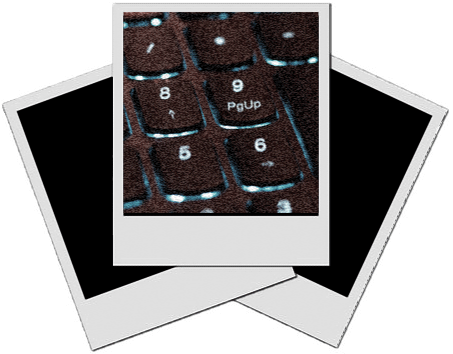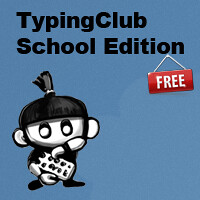The following is taken from Canadian Art Magazine and is about Magic, Myths, Fairy Tales and Fears
INTRODUCTION
In these activities, students learn how artists Shary Boyle, Allyson Mitchell and Ed Pien use the ideas of fears, fairy tales and the grotesque to create fantastical images and environments. Each of the artists invites viewers into their world of symbols and dreams to ignite both the imagination in a fearful and playful manner. The art-making activities give students the opportunity to discuss and create imaginative drawings or create a performance based on the ideas of fears, fairy tales and the grotesque.
FOCUSING QUESTIONS
•
1. What are you afraid of? What types of fears do you experience —mythical and real?
•
2. How are fears represented in fairy tales, fables and other stories? Most of these stories can be traced back hundreds of years; why do you think they have survived?
•
3. The catchphrase “culture of fear” is often used today within a political framework. Using this as a foundation, discuss the notion of anxiety within contemporary society.
ARTIST 1: SHARY BOYLE
Toronto-based artist
Shary Boyle, featured in this educational video on installation art, is well-known for her bold, fantastical explorations of the figure. Her multi-disciplinary practice mines the history of porcelain figurines, animist mythologies and historical portraiture to create a symbolic and imaginative language uniquely her own. From sculpture to performance, Boyle interprets her personal observations of sexuality, relationships and human vulnerability through a darkly feminist lens.
In this video, Boyle explains that “Installation is the next step from sculpture, but it’s really addressing a space. It has the potential to take you by surprise to physically activate the space.”
As reviewer
Yael Brotman has also observed, “The themes of innocence and transformation are shown, in Boyle’s work, as in fairy tales, to be seldom soft and never sentimental. Horror is always nearby.”
Here are some other resources on Shary Boyle that you and your students may find useful:
Shary Boyle: National Treasure, Too by Leah Sandals (report on 2012 show at the BMO Project Room)
Shary Boyle: Flesh and Blood by Vanessa Nicholas (review of 2010 exhibition at the Art Gallery of Ontario)
Shary Boyle: Bat Drama sans Dracula by Bryne McLaughlin (review of 2009 exhibition at Jessica Bradley Art + Projects)
Sobey Finalists 2009: Shary Boyle (slideshow of works)
Shary Boyle: Porcelain Dreams and Nightmares by Lorissa Sengara (feature on Boyle from a 2006 issue ofCanadian Art
Rewind: Shary Boyle by Yael Brotman (review of a 2002 exhibition at Katharine Mulherin Contemporary Art Projects)
ARTIST 2: ALLYSON MITCHELL
Allyson Mitchell is a maximalist artist working predominantly in sculpture, installation and film. Since 1997, Mitchell has been melding feminism and pop culture to play with contemporary ideas about sexuality, autobiography, and the body, largely through the use of reclaimed textile and abandoned craft.
In the above video on sculpture, Mitchell describes parts of her process: “Recently I got a package of drawings that this little kid had done in Winnipeg, who saw my work at the Winnipeg Art Gallery. I make these big lesbian feminist Sasquatch sculptures and he had done drawings of them and sent them to me with this really beautiful note that talked about his experience of really being afraid of the work at first and then loving it.”
ARTIST 3: ED PIEN
Ed Pien creates his own unique visual language of tales and myth, of half-human and half-animal figures, plunging the viewer into worlds that spark the imagination. His multi-disciplinary practice includes drawings, paper cutouts and installation work.
As curator Nancy Campbell notes in our educational video on curating, embedded above, “I was fascinated by Ed Pien’s work for this exhibition because he combines the mythological with the monstrous, and its very evocative and compelling. And you can see how he takes figures and then melds them into other figures, and it just becomes this crazy dream space.”
Chinese artist Lai Wan, in a feature for Canadian Art magazine, has also noted, “The art of Ed Pien fully describes the embodied, multifaceted world of these demons, investigating what I read as a phenomenological manifestation of what Jacques Derrida termed hauntology.”
Lai Wan continues, “There are many things happening in Pien’s pieces: the expression of the grotesque, stage fright for both the viewed and the viewer, tender seductions and sophisticated foreplay involving vulnerability, delicacy, fragility, strength.”
Here are some other resources that you and your students may find useful about Ed Pien:
David Balzer’s Top 3: Haunted Heroes (a year-end best-of list for 2010 including one of Ed Pien’s exhibitions)
Ed Pien: Drawing in Many Forms by Zoë Chan (a review of a 2009 exhibition at Pierre-François Ouellette art contemporain)
ART-MAKING ACTIVITY 1: DRAWING: NIGHTMARES, MONSTERS AND THE REPETITION OF FEAR
Objective
Students build an understanding of how fears are repeated, and demonstrate the idea of the grotesque by using the techniques of monoprinting to create layered drawings in the manner of Ed Pien. Students’ individual drawings will be used to create a collaborative installation based on the ideas of fears and dreams.
Discussion
Either as a class or working in small groups, lead a discussion on the idea of nightmares. Who has them? When do they occur? How often do they occur? What feelings occur when they happen?
Materials
•
stack of bond paper (8.5” by 11”)
•
India ink
•
brushes (i.e. inexpensive bamboo brushes)
•
pencil crayons
•
gouache
Step 1
Taking cues from Ed Pien, students create drawings based on the notions of fears, horror and the grotesque using India ink on bond paper. This preliminary exercise is designed to be intuitive and quick. Drawings can be free formed and abstract representations.
Step 2
Students select one drawing from Step 1. Using this image as a key source, students re-draw the image again and again.
*To further the students’ understanding of Pien’s process, students can repeat their image by rubbing a blank piece of paper against an inked drawing that is still wet. This monoprint technique produces a mirrored distorted image of the drawing.
Step 3
Building on their drawings from Step 2 and their lists of nightmares, students re-work and finish their images using other mediums (i.e. pencils, gouache and crayons).
Step 4 (Optional)
Compiling all of the drawings from step 3, students work in small groups to determine a format for display. Possible strategies include: arranging their drawings into a grid, building a 3-dimensional papered structure (i.e. like a tent), collaging images into a singular mural, stitching all of the drawings together to form a curtain.
ART-MAKING ACTIVITY 2: A FAIRY TALE PERFORMANCE
*timeframe: 6 to 10 classes are recommended
Objective
Students will reinterpret a classic fairy tale and create it in a performance by using the interplay of light and shadows. Students will understand how myths and fairy tales are recreated by artists Shary Boyle and Allyson Mitchell. Students will understand how performance as an art is practiced.
Discussion
In this activity, students identify and give examples as to how fear, horror and the grotesque play out within some of the classic fairy tales. For example, in the fairytale, Bluebeard, Bluebeard’s wife finds a ghastly, bloody room strewn with the body parts of his murdered wives. Students create a performance piece.
Materials
•
drawing materials (paint, ink, pencils, crayons etc.)
•
paper (a mix of coloured paper, black and white)
•
clear mylar/acetate
•
permanent markers
•
adhesives (hot glue sticks and gun, tape, string etc.)
•
overhead projectors, slide projectors (if available, if not flashlights and clip lights will also work creating a shadow puppet theatre)
•
brass fasteners
•
thin wire and pliers for cutting
•
scissors
•
hole punchers
•
sticks (i.e. chopsticks, tongue depressors, skewers)
Step 1
After producing a list of fairy tales with students, divide students into small working groups, and ask them to choose one of the classic fairy tales. Students should look at the plot, and discuss which part of the fairy tale represents most horrific, menacing or romantic.
Step 2
As a group, students decide how they would like to reinterpret this classic. They may want to focus on one scene rather than tell the whole story. The performance can be as short as 3 minutes and as long as 10 minutes.
Step 3
Based on their story, students develop a series of sketches that describe the scene, the characters and the action.
Step 4
Using their sketches as a guide, students work as a group to produce all materials needed for the performance. Two approaches are suggested:
a) Working with acetate, markers and ink, students build the scene from translucent pieces that are projected via an overhead projected. The characters are built from opaque cut paper, which projects silhouettes when placed on the overhead. Actions can happen via the overhead and/or via live performance.
b) Students build a puppet theatre with a white sheet pulled taut over the opening. The characters and the scenes (i.e. buildings, trees, mountains etc.) are individually cut-out from paper and mounted with a stick. When light is placed behind the scene, the cut forms project shadowy silhouettes onto the taut screen. Actions take place as students move the puppets in relation to the light.
Step 5
Rehearse. Encourage students to play with the distance between light and the cut-out characters to see how distance affects the size of the cut-outs, and contributes to creating an atmosphere of gothic elements.
Step 6
The performance.
TERMINOLOGY
Metaphysics: The branch of philosophy that deals with the first principles of things, including abstract concepts such as being, knowing, substance, cause, identity, time, and space. Metaphysics has two main strands: that which holds that what exists lies beyond experience (as argued by Plato), and that which holds that objects of experience constitute the only reality (as argued by Kant, the logical positivists, and Hume). (Source: New Oxford American Dictionary)
Myth: A traditional story, esp. one concerning the early history of a people or explaining some natural or social phenomenon, and typically involving supernatural beings or events. (Source: New Oxford American Dictionary)
Gothic Horror: Gothic fiction (sometimes referred to as Gothic horror) is a genre of literature that combines elements of both horror and romance. As a genre, Gothic fiction refers to a style popular in the 18th century, and it is generally believed to have been invented by the English author Horace Walpole, with his 1764 novel The Castle of Otranto. Gothic fiction is characterized with elements of both horror and romance. A key ingredient in horror fiction is its ability to provoke fear or terror in readers, usually via something demonic. There should be a sense of dread, unease, anxiety, or foreboding. (Source: New Oxford American Dictionary)
Fairy Tales: Fairy tale is term for a wonder tale involving elements of marvel and occurrence, but not necessarily fairies. Fairy tales typically feature such folkloric characters as fairies, goblins, elves, trolls, dwarves, giants or gnomes, and usually magic or enchantments. Twentieth-century psychologists, notably Sigmund Freud, Carl Jung, and Bruno Bettelheim, have interpreted elements of the fairy tale as manifestations of universal fears and desires. (Source: Encyclopedia Britannica and Wikipedia)
CROSS-CURRICULUM LINKS
Art History: Hieronymus Bosch and Pieter Bruegel, Wayang Kulit—Javanese Shadow Puppets
Music: Gamelan Orchestra (a distinctive music ensemble fro Indonesia that accompanies the shadow puppet theatre)
Science: light, Technology relating to the history of motion pictures; magic lanterns, Edison’s kinetoscope—a peep-show machine, Eadweard Muybridge’s studies in motion, shadow puppets, the mutoscope, chroma-trope, camera obscura)
Language: Fairy tales and myths (from Native Legends to Javanese puppet theatre to the Brothers Grimm to parables)































